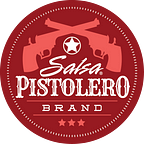Stop Telling Me What ISN’T Mexican Food: Part Three
In recent months, I’ve been told, or I’ve read, or I‘ve overheard this refrain over and over again: “That’s not real Mexican food.” I know this is not a new phenomenon, but the odd thing is not the argument, but rather the source of these corrections. Those pointing out what “isn’t real Mexican food” are coming from all different angles, backgrounds, and levels of expertise. It’s a pedantic free-for-all, that everyone feels they have the right take on. It’s always “And I know Mexican food, because I’m from _____.” But the fill-in-the-blank might surprise you. With this final installment, allow me to share this final example…
Part 3: The Defenders of the Culture
I recently noted an online conversation that perfectly encapsulates the ideals of those I call the “Defenders of the Culture.” When discussing LA restaurants, the writer exclaimed, “I told him that [Mexican restaurant named after a Mexican State] is real Mexican food. I had to explain to him that Tex Mex isn’t Mexican food; in fact, it’s actually cultural appropriation.”
As I’ve written before, most attempts to draw lines about what is and what is not “real Mexican food” are fraught. Difficulties arises from your personal context, questions of time and borders, and pedantic attempts to canonize things that simply aren’t in stasis. All culture, and especially food, is constantly changing and morphing. One person’s “authentic,” is another person’s “fusion” or “appropriation.”
But for the Defenders of the Culture this simply can’t be true. There is obviously a border between the USA and Mexico. There are certain ingredients that do not belong to Mexico, non-traditional techniques that lie outside of the Mexican repertoire, and there are obviously people who fit the description of “Mexican” versus those that do not. To these Defenders of the Culture, of course Tex Mex isn’t Mexican food. Chips and queso? Shredded cheese? Flour tortillas? Chili con carne and fajitas; all beef all the time? These things just simply aren’t Mexican.
There are two main problems I have with these arguments. The first is a question of time. I will grant that many of these items are not found throughout Mexico, but I would counter that most of them were created in a geographical area known as Mexico at the time, or were developed and served by Mexicans in what might have since become the USA (see the origin of nachos in the RGV or chili in San Antonio in previous installments of this series). One of the glaring omissions made by the Tex Mex detractors is that the food of the geographical area now known as Texas, was developing its own kind of cuisine as far back as the 1500s. The era of the Spanish missions brought European authority and their traditions and techniques, which changed everything. Now, if a food item has been made for 500+ years in a region under Mexican rule, but that place has been part of the USA since 1845, I’d say it’s a bit laughable to claim it’s more Texan (or American or Gringo) than Mexican. These locales brought us beef barbacoa and fajitas thanks to vaqueros, flour tortillas thanks to Catholic missionary priests, multiple varieties of cheeses thanks to Mennonite exiles among others, and so much more. The fact that cattle were a economically and culturally foundational for these areas begat beef barbacoa rather than goat or lamb. The technique was the same. The fact that wheat flour was preferred by the missionaries and could be grown more easily in these areas explains the prevalence of flour tortillas. Even with these influences, the origins of these foodstuffs were most certainly Mexican, and no amount of commodification of them by Hormel or Ro-Tel or other American industrialist powers will ever change that.
The second problem with the initial argument is that these definitions of “Mexican food” that rely on location and geography, for both traditional and modern cuisine, are bound to fail. Since I’ve presented the case of the al pastor taco before, let’s look at pan dulce and flan. Geographically and culturally tied to old Mexico, the Defenders of the Culture would never balk at considering either “authentically Mexican.” Yet, pan dulce is most certainly made from wheat flour, using French patisserie techniques, with little to no connection to the indigenous culinary traditions of Pre-Columbian Mexico. Flan is based entirely on European traditions, techniques and ingredients dating back to the Middle Ages. Yet, I guarantee that no one considers these facts disqualifying these culinary icons from being considered “real Mexican food.”
Similarly, in these modern times, I submit to you: Tostilocos. Can any Defender of the Culture claim these are not Mexican food? While many of the ingredients are not what they might consider Mexican (Tostitos or Doritos chips, gummy worms, Japanese candied peanuts), they aren’t made anywhere else in the world, were created in Mexico and are now a beloved Mexican snack. So riddle me this… are Tostilocos not real Mexican food? Is this simply Mexicans caught in their own version of cultural appropriation? I say no; this is just what Mexican food looks like in 2020.
Simply put, the Defenders of the Culture are defending boundaries that simply don’t exist. The culture intruders they are fighting to denounce have their place in the beloved canon, whether they like it or not. No matter how many dates are cited, or where borders are drawn, or how many origin stories are researched, the authenticity of food lies in the people making and consuming it. And even that rubric fails to grasp the fluidity and constant evolution of food. It’s best to refrain from fighting for barriers and instead enjoying the richness and complexity of anything called Tex Mex or Mexican on merit alone. So, grab a cup of tortilla chips, some gummy bears, candied peanuts, shredded cucumbers, carrots, jicama, add Tajin and chamoy and SMILE!
